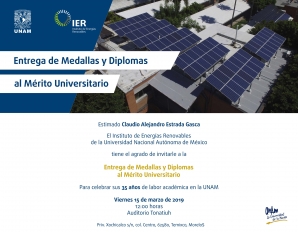Mostrando artículos por etiqueta: Journal of Solar Energy Engineering
Monte Carlo Heat Transfer Modeling of a Particle-Cloud Solar Reactor for SnO2Thermal Reduction
H.I. Villafán-Vidales,C.A. Arancibia-Bulnes, S. Abanades, D. Riveros-Rosas, H. Romero-Paredes
Abstract
A directly irradiated cavity solar reactor devoted to the thermal reduction of SnO2 particle-cloud is studied numerically by using the Monte Carlo method. The steady-state model solves the radiation and convection heat transfers in the semitransparent particle suspension and the chemical reaction. It was used to predict the temperature distribution and the reaction extent inside the cavity, as well as the theoretical thermochemical efficiency for different operational conditions. The simulations assume that the reactor contains a nonuniform size suspension of radiatively participating reacting SnO2 particles. The model takes into account the radiative characteristics of the particles, as well as the directional characteristics of the power distribution of the incoming concentrated solar energy. The particle concentration, the particle size, and the length of the reactor are varied. Results show that the particle temperature and the yield of the endothermic reaction are higher when the reactor is fed with a cloud of particles with average diameter of 20 μm. The maximal thermochemical efficiency reached is 10%, which corresponds to an optimal optical thickness of around 2.
Monte Carlo Heat Transfer Modeling of a Particle-Cloud Solar Reactor for SnO2Thermal Reduction

